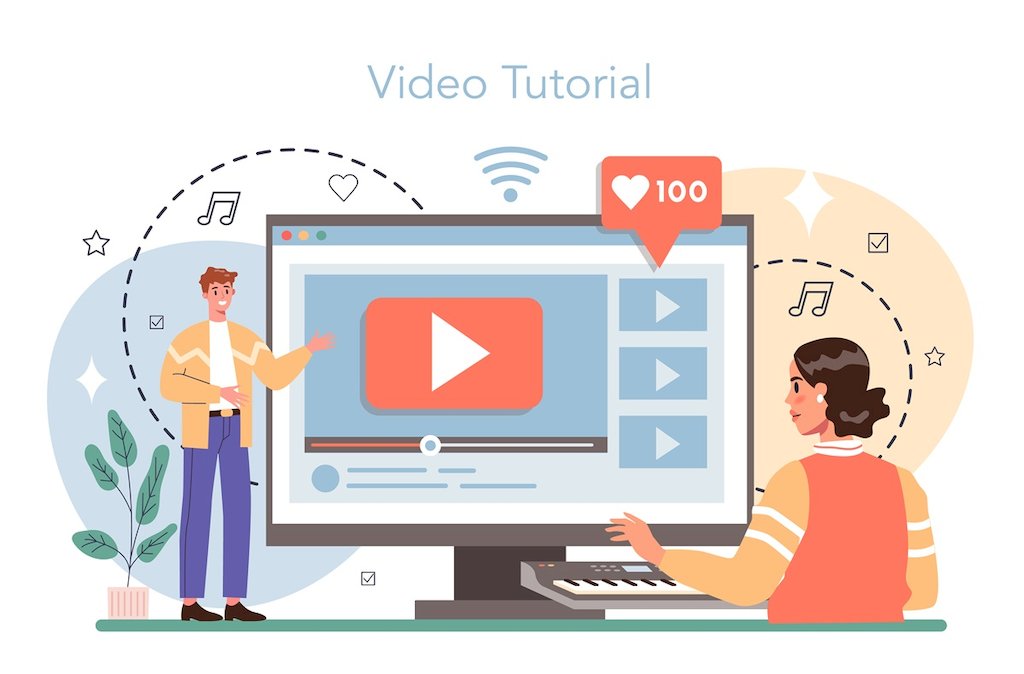One of the most common challenges in e-learning is to ensure that learners complete courses. Some of the reasons for low course completion rates may include struggles to balance work and studies, distractions, and a lack of motivation. A lack of accountability can increase online course dropout. Technical issues with videos can also prevent course completion.
A multi-faceted solution is often necessary to increase course completion rates. You may have to improve your course structure, clarify outcomes, offer rewards, and incorporate video engagement tools. Video engagement tools provide a powerful way to increase learner retention and course completion.
Course completion rates affect the impact of your courses and your revenue. The effort you put into your courses should translate into tangible results. High completion rates will maximize your return on investment (ROI).

Why engagement matters for completion rates
When you engage learners, they are more likely to recommend your courses, leave reviews, and subscribe to future offerings. This helps to improve your reputation and attract new learners.
The trick is to find ways to engage learners. What can turn passive learners into more active ones? You can motivate them by aligning learning with their goals and interests. This makes learning more meaningful to them. You can inspire them with how gaining new knowledge and skills can help them grow personally and professionally.
External rewards and recognition can also motivate learners. You can offer learners regular motivation in the form of external rewards and recognition to improve engagement. Offering certificates of completion or rewards can be validating.
Interactive video tools that boost engagement
If you want to optimize videos for conversions, adding interactive elements creates a more immersive experience for your audience. The use of interactive video tools can make your courses more compelling and interactive. This means your videos will capture and retain learner attention. Video tools can help you to offer flexible and personalized learning experiences that cater to different learning styles and preferences.
- Quizzes and assessments in videos can reinforce learning and offer learners immediate feedback. You can offer personalized recommendations to help them when they’re struggling or give them additional resources if they’re progressing quickly.
- Clickable hotspots trigger a specific action when learners click them. Learners may get access to additional information or they may be taken to a related video or website. A hotspot in a tutorial video could take the viewer to a specific step of the instructions.
- Polls and surveys encourage learners to give their opinions and offer feedback. This makes them feel more involved in the learning process.
- Branching allows you to create personalized learning paths. For example, Learners can follow a sequence of modules based on their individual needs or interests.
- Calls-to-action (CTAs) such as “choose your path” or “click here to learn more” can encourage engagement. A CTA shows a learner what to do next so it keeps them engaged.
- Progress reminders is about sending regular progress reminders via tools such as video messaging. These help learners get to the finish line. They can remind learners of upcoming milestones and deadlines.
- Gaming elements like points, leaderboards, and badges can motivate learners and encourage interaction.
- Video chaptering allows learners to access the chapters they need speedily without having to go through an entire video.
The Cincopa video hosting empowers you to create engaging video content with many interactive video features including quizzes, calls-to-action, video chaptering, and branching paths.

Best practices for applying video engagement tools in your course
1. Make the course outcomes clear
Learners are less likely to drop off if they clearly understand the results they can achieve from your course. They should know what they will be able to do by the end of the course. You need to align interactive elements with your goals so that outcomes are measurable. For example, clickable information points help to reinforce learning.
2. Know your audience
You need to know your target demographic so you can choose interactive elements that will resonate with them. This involves understanding their behaviors and preferences. Professional audiences may want more detailed content while younger audiences usually appreciate quick, gamified interactions.
3. Consider video length
A mistake course creators often make is to make videos too long and complex. It’s best to structure learning into bite-sized pieces of a few minutes that are easy to digest.
Instead of offering a video of 10 minutes, break it down into 2-minute segments that all have their own interactive elements. You can focus on one concept at a time in the segments so you don’t overwhelm learners with too much information.
Live streaming of video content doesn’t have to stop there. You can repurpose it into bite-sized content, add interactive elements, and offer it as an on-demand video.
4. Time your interactive elements
You need to visualize the journey of a viewer through your interactive video content. This can be in the form of a storyboard. When you lay out the structure, you can see where you need to place interactive elements. Placing them strategically can maintain the interest of learners and encourage interaction throughout a video.
Any abrupt changes can disrupt the flow of a video. Fade-ins and subtle visual cues can guide viewers from one point of interaction to another. This helps to create a more consistent viewer experience.
5. Make sure interactive elements are mobile-friendly
Many learners access e-learning courses from their mobile devices. You need to ensure that interactive elements such as buttons are large enough to tap easily and spaced far enough apart to avoid accidental clicks. Responsive video design ensures that elements adapt to different screen sizes which helps with learner retention.
6. Ensure fast loading times
If you want to keep learners engaged, video loading times must be fast. Slow videos can cause viewer frustration and high bounce rates. Video files need compressing to reduce their size without compromising quality. Using a content delivery network (CDN) can reduce latency and increase speed by delivering viewers the video content from a server closest to their location.
Some learners will give up on videos due to technical issues. They expect speed, quality, responsiveness, and easy navigation. Cincopa video hosting platform can handle all the technical aspects of hosting and delivering interactive videos with ease. It has a CDN and offers fast loading speed, quality, mobile responsiveness, and much more.
7. Create a sense of urgency
Passive learners may technically be doing your course but they may keep postponing completion. If they don’t watch videos, complete assignments, or participate in discussions, they can prevent you from growing your e-learning business. You need to give them a reason to complete your courses. Think about introducing a timeline for lesson availability and perks for completing assignments.
Analytics to measure improvement
- A/B testing can help you to optimize your videos. You can compare different versions of a video and see which features drive more engagement. For example, do branching paths or calls-to-action engage learners more? Continuous testing and optimization is the only way to create more engaging interactive content.
- User feedback loops can also enhance your use of video engagement tools. You can collect feedback through surveys, comments, or any direct interaction with videos. This allows you to regularly update your video content based on user insights.
- Video analytics tools give you insights into what works and what doesn’t when using video engagement tools. If you want to measure video marketing campaigns ROI, you need to use analytics tools.
- Video heatmaps can help you track how viewers respond to videos. It shows their level of engagement by using different colors. Do they click on certain choices more than others? Do they complete the actions you want them to take? Do they go to a particular chapter within a video? Do they complete surveys or polls? All these actions can show their engagement levels. When you have insights like these, you can make data-driven improvements.
Conclusion
Ultimately, improving course completion rates requires you to think about the learner experience. You need to find ways to turn passive viewers into active learners. Video engagement tools will help you to do this. On Cincopa’s home page, you can find out more about its video engagement tools and advanced video analytics. Sign up for a free trial and see what the platform has to offer to increase video engagement and course completion.









